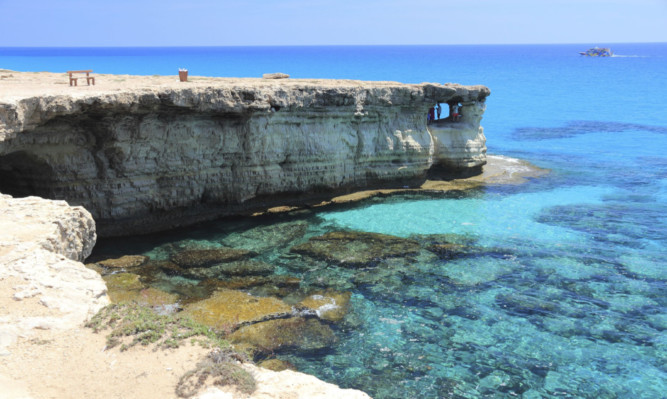
Cyprus has changed beyond all recognition in the past 20 years.
By and large, it’s been a positive change, and more care is now taken in the development of resorts and in preserving the natural landscape.
In addition to the many beautiful hotels you find in the likes of Paphos and Ayia Napa, a whole raft of excellent self-catering villas are now available to rent for a truly relaxing holiday.
And, of course, there’s more to Cyprus than seaside resorts. The Troodos mountains are stunning, as is the Akamas Peninsula.
Turtles lay their eggs on Aphrodite Beach and the range of fauna and flora throughout Cyprus is impressive. For a spring or autumn break, hiking is a good option, as is golf.
Popular with retirees, Cyprus is a safe island.
English is spoken everywhere, they drive on the left and you’ll feel at home and welcome.
The bustling port town of Limassol isn’t my favourite part of the island, but it is a handy base for touring.
It’s located between two archaeological sites the ancient kingdoms of Amathous to the east and Kourion to the west.
It’ has good restaurants and wine bars too, while on the hill above the town you’ll find a wine museum at
Erimi where the country’s 6,000-year-old wine industry can be explored.
The best hotel in Limassol is Le Meriden a lovely, spacious resort hotel in beautiful, landscaped gardens, overlooking an impressive beach and with various swimming pools.
Like to party? Then head for Ayia Napa the liveliest resort on Cyprus.
It’s more suited to those under 30. That said, it has some cracking beaches. Nissi in particular, is great. Paphos has perhaps the most diversity and is a great choice for all ages and budgets.
This ancient harbour is a town of two halves lively Kato Paphos with its bars, restaurants and shops, and the upper part of town called Ktima, which is far quieter and where the locals live and work.
This is where you’ll find the island’s best archaeological sites and it is famed for being the birthplace of Aphrodite, goddess of love.
The main attraction is the Tomb of the Kings, a Unesco World Heritage site less than two miles from Kato Paphos.
There are several museums here, but if you visit just one, make it the Byzantine Museum in Ktima’s main square. The oldest icon on the island, the Agia Marina, is found here and dates all the way back to the 9th Century.
Nicosia is known locally as Lefkosia and this star-shaped city with a fascinating history is well worth a visit.
It’s located in the middle of the country and the wall that divides the Turkish north from the Cypriot south cuts right through the city. A UN-patrolled buffer zone, called the Green Line, slices it clean in two.
The old town is fascinating and is surrounded by thick Venetian walls that are more than 400 years old.
Dating from 1567, the circular defence wall was erected by the Venetian rulers to ward off Ottoman invaders.
Unfortunately the walls failed in this task. In July 1570 the Ottomans landed in Larnaka and three months later stormed the fortifications killing 50,000 inhabitants.
For a great view over the divided city, head for the Ledra Museum-Observatory and go up to the 11th floor of the Shacolas Tower.
If you’re on an organised tour of Nicosia, chances are they’ll take you to Laki Yitonia, which means ‘popular neighbourhood’.
This part of town used to be seedy and filled with cheap shops, poor restaurants and ladies of the night.
It’s a bit better than it used to be but, frankly, I’d still give it a swerve as it’s tacky tourist material.
See Visitcyprus.com. Also visit the short escapes webpage: cyprusshortescapes.com.

Enjoy the convenience of having The Sunday Post delivered as a digital ePaper straight to your smartphone, tablet or computer.
Subscribe for only £5.49 a month and enjoy all the benefits of the printed paper as a digital replica.
Subscribe